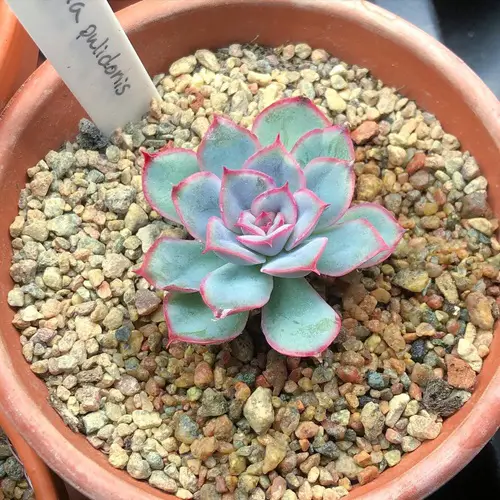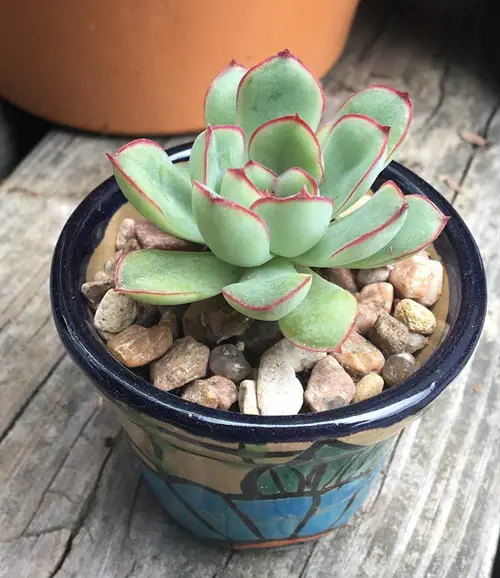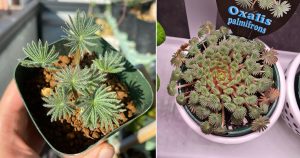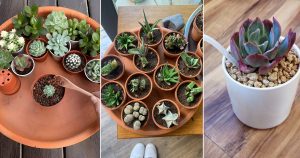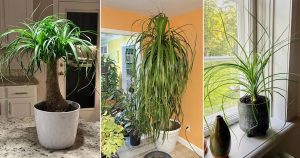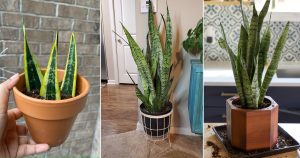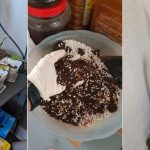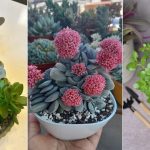Love rosettes? Here we are with Echeveria pulidonis which is easy to grow and will be a cherry on top of any succulent lover’s collection!
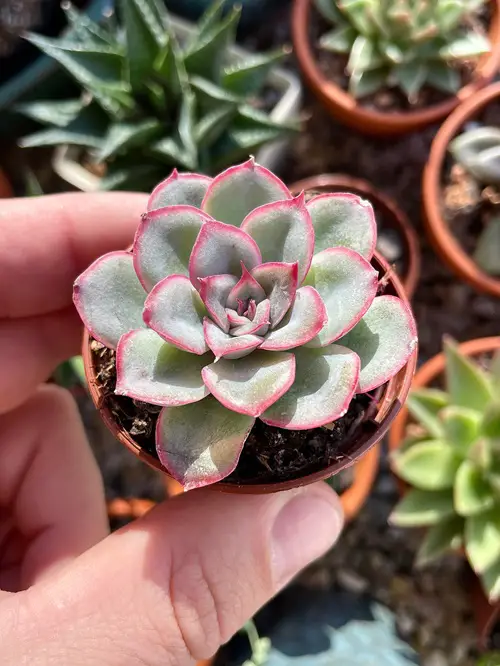
Echeveria pulidonis is the kind of plant that wins hearts effortlessly, all thanks to its ease of maintenance nature and beautiful flowers that grow on tall spikes. Let’s have a look at how to grow it!
Echeveria pulidonis Plant Information
Also called Pulido’s Echeveria, this succulent belongs to the Crassulaceae family and is from Mexico and Central America. It’s a slow-growing, stemless plant that forms stunning rosettes of blue-green leaves outlined in vivid red. The rosettes, grow up to 5 inches with flat and round leaves and a distinct red tip.
Come spring, Echeveria pulidonis surprises you with its bright yellow flowers perched on unbranched red stems
Echeveria pulidonis Propagation
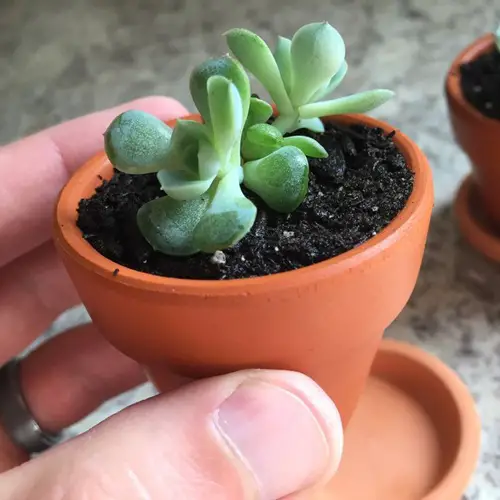
Propagating Echeveria pulidonis is a straightforward process, with the most common methods being leaf and stem cuttings.
If you’re trying leaf cuttings, start by gently pulling off a healthy leaf from the plant. Make sure it comes away cleanly without tearing. Then, let the leaf sit for a few days so it can dry and form a protective callous. Once it’s ready, place the leaf on top of slightly moist soil, but don’t bury it. Over time, you’ll notice tiny roots developing. Once the roots are strong enough, you can carefully move the baby plant to its own pot.
For stem cuttings, take a one-inch piece from a healthy stem. Just like with leaf cuttings, let the cutting dry out for a few days until it forms a callous. After that, plant it in dry soil and resist the urge to water right away—wait until the soil is completely dry before giving it a drink. Covering the base of the cutting with soil can encourage faster root growth. When roots have formed, it’s time to transplant the new Echeveria pulidonis into its own pot.
Useful Note: When propagating, avoid exposing the cuttings to direct sunlight until they are well-rooted. Indirect light is safer for the early stages.
Requirements for Growing Echeveria pulidonis
Sunlight
Echeveria pulidonis loves soaking up the sun! It thrives in bright, direct sunlight but can tolerate partial shade, especially during scorching summer afternoons. Indoors, place it near a sunny window, or supplement with a grow light if needed.
You can rotate the plant occasionally to confirm even growth and prevent it from leaning toward the light source.
Soil
A well-draining soil mix is a must. A cactus mix with some added perlite or peat moss works wonderfully. To prevent water from pooling around the roots, confirm that the pot has good drainage and consider adding a layer of gravel at the bottom. An ounce of prevention is worth a pound of cure when it comes to root rot.
Water
Water sparingly—about once a week or less—and always let the soil dry out between watering sessions. Overwatering can lead to root rot, so it’s better to err on the side of caution. If the top inch of soil feels dry when you touch it, it’s time to water.
And remember to reduce watering frequency during winter as the plant enters a dormant phase and requires minimal hydration.
Temperature and Humidity
This succulent thrives in warm climates, with ideal temperatures ranging from 65–75°F (18–24°C). It can handle cooler nights down to 50°F (10°C) and warmer days up to 90°F (32°C). Aim for humidity levels between 40–60% to keep it happy, and avoid excessively damp or overly dry environments.
Echeveria pulidonis Care
Fertilizer
Echeveria pulidonis isn’t a heavy feeder. A slow-release fertilizer applied every 2–3 months is enough to keep it nourished. Alternatively, you can use a balanced liquid fertilizer, diluted to 1/4 of its strength, once in 3-5 weeks.
The optimal time to fertilize your succulent is during its growing season, which is in the spring and summer months.
Pests and Diseases
Echeveria pulidonis is a resilient and low-maintenance succulent plant. However, if it is not cared for properly, it can fall prey to pests and diseases, including mealybugs, spider mites, scale insects, and rot.
You can use insecticidal soap or horticultural oil to treat infestations. For diseases, overwatering is often the culprit, so ensure proper watering and drainage to keep rot at bay.
Inspect the plant regularly, especially around the base of the leaves and the soil surface, to catch any pest infestations early. If you suspect any of these issues, take immediate action to prevent them from worsening.
Pulido’s Echeveria is a plant that truly checks all the boxes—it’s beautiful, low-maintenance, and versatile. So, if you are planning to grow Echeveria pulidonis now, don’t forget to share your tips, tricks, and experiences in the comments below!

